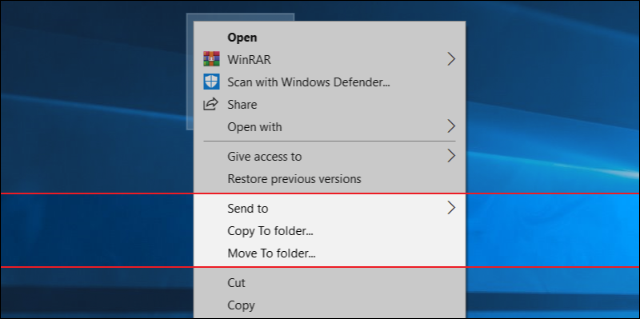How to add Copy To and Move To buttons to the right-click menu

We will provide you with a lot of videos for education and reform. You can ask about any computer malfunction that happened or is happening with you You can donate to this account, even if it is worth at least $ 1, in order to continue giving and collecting information https://www.paypal.me/abdalrahmanaltall



Step 3: Right click on the desired volume and select the option Shrink Volume.

Tips: Extending and shrinking have some basic limitations. You can only shrink a partition if it has enough free space, and you can only extend a partition if it has unallocated space on the same drive.


Step 4: You'll see the New Simple Volume wizard, and click the Next.
Step 5: Choose a volume size that between the maximum and minimum sizes.
Step 6: You a can assign a drive letter or drive path to your partition. Click the Next.
Step 7: To store data on this partition, you must format it first. Choose whether you want to format this volume. Click the Next.
Step 8: Click the Next.
Step 9: Later, you could see the new drive in "Disk Management".
Step 1: You can open Control Panel and type partition in the search bar. Click the Create and Format Hard Disk Partitions.
Step 2: You'll enter the Disk Management by administrative tools
Step 3: Right-click a partition and select Delete Volume to delete a partition.
Step 4: Click the YES. This option deletes every single file on the partition. Back up any data you want to keep before deleting.
Step 1: Input “partition” in the search box.
Step 2: Access Disk Management.
Step 3: Right-click on the desired volume and select the option format.
Comments